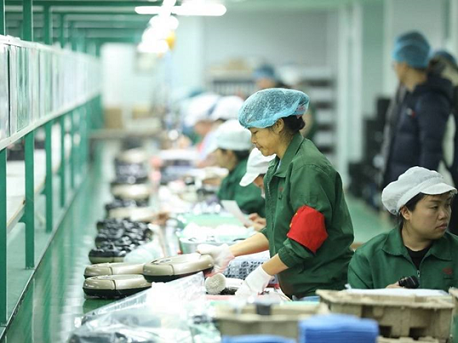Consumer-to-Manufacturer: a consumer-driven manufacturing process
14/01/20
3'
Technological advancements in big data and AI are disrupting commerce in fundamental ways, including supply and demand forces. Spearheaded by China’s e-commerce giants, a new business model is emerging: consumer-to-manufacturer (C2M).
Reshaping the retail industry by prioritizing consumers’ needs, here’s everything you need to know about C2M.
Big data: M2C becomes C2M
Hailing from e-commerce giants in China, the Consumer to Manufacturer model connects end-producers and end-consumers to produce tailored products at lower prices. Platforms such as Pinduoduo—counting 536.3 million active buyers and 7 billion products sold in the first half of 2019—share consumer data with retailer enterprises, allowing them to better identify market demands and know exactly what consumers need, want, as well as their budget.
The consumer, via big data, approaches manufacturers with propositions of what they should produce: it is now the consumer who initiates production.
C2M is being referred to by some as the “fourth technology revolution” (after the steam-engine, electricity, and automation), and is expected to revolutionize the production and supply chain while reshaping the retail industry by prioritizing consumers’ needs.
Victor TsengC2M is essentially evolving traditional manufacturing from an R&D and marketing-driven process into a consumer-driven process.
VP of Corporate Development at Pinduoduo
A model mutually benefiting retailers and consumers
In the traditional production model, manufacturers produce goods and approach consumers with the product trying to make sales. It typically takes more than 18 months to develop a new product under this system.
Data allows manufacturers to understand consumer needs and preferences, enabling products to be developed in a much shorter time and significantly increasing efficiency within the production process.
Reduced product lines, stronger economies of scale and a streamlined supply chain mean the end purchasing cost is decreased. Manufacturing enterprises can better realize product innovation and satisfy market demands, allowing them to offer a higher quality of products at lower price points.

Jiaweishi: A C2M case study
Shenzhen’s Jiaweishi is a manufacturer of brand-name consumer goods, including Philips and Whirlpool. In 2018, they established their own brand of robot vacuum cleaners. When they started selling online through Pinduoduo’s “New Brand Initiative” program, they were granted direct access to huge buyer traffic.
Following the success of initial sales of the original robot vacuum, Jiaweishi is now able to greater improve their product and further increase sales:
• Based on the data collected from Pinduoduo, the robot vacuum’s randomized cleaning route to a more orderly one. The product’s appearance is being redesigned to make it more appealing to consumers.
• Consumer concerns with regards to the quality of an unknown brand’s product are being addressed via live streaming videos. These live streams make the manufacturing process transparent to consumers, while simultaneously spreading Jiaweishi’s brand name.
Want to learn more about the Chinese e-commerce market? Check out our guide:
Chinese Ecommerce Outlook
A full review of the Chinese ecommerce market by Lengow Global industr…
Learn moreImages: Pinduoduo
Your e-commerce library
Sign up for our newsletter
By submitting this form you authorize Lengow to process your data for the purpose of sending you Lengow newsletters . You have the right to access, rectify and delete this data, to oppose its processing, to limit its use, to render it portable and to define the guidelines relating to its fate in the event of death. You can exercise these rights at any time by writing to dpo@lengow.com

Trending Posts
Marketing channels
ChatGPT Ads and advertising on GenAI Search Engines: what you need to know
Advertising on generative AI-based search engines (GenAI) marks a new era in digital marketing. After two decades dominated by traditional…
22/05/25
6'
Marketing channels
Reddit and Social Commerce: When Users Take Back Control
Before buying anything, we compare. We hesitate. And more and more often, we end up typing the product name followed…
30/06/25
8'
Marketing channels
How to Sell on TikTok in 2025: The Ultimate Guide to Success
To sell or not to sell on TikTok? That remains a question many brands ask themselves. But here’s what you…
03/02/25
7'
E-commerce Trends
E-Commerce 2025: The New Rules of Digital Retail
What’s going on in e-commerce? A lot. If 2024 was the year brands got comfortable with marketplaces, AI tools, and…
11/07/25
8'
Marketing channels
Omnichannel Strategy: The Best Examples of Successful Brands
Consumers interact with brands through multiple channels, including online, in-store, and mobile apps. More than 90% of consumers expect a…
04/04/25
5'




